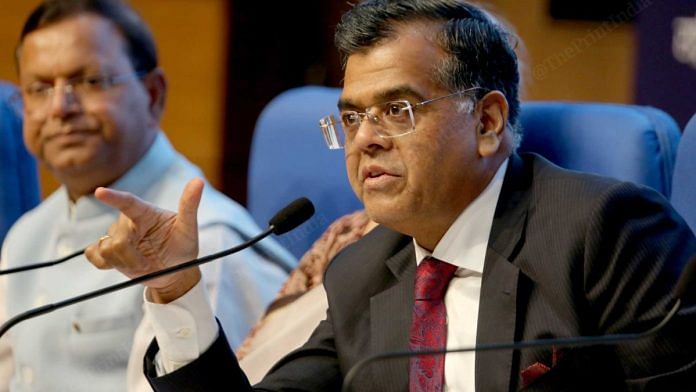What India’s Cabinet Secretary says matters, at least to India’s most elite civil service, the IAS. After all, he is the head of the civil services. TV Somanathan, the country’s 33rd Cabinet Secretary, made news last week with a missive to his colleagues in the Government of India asking them to grant appointments to, and get feedback from, people who are outside the government, presumably in the private sector and civil society. At one level, it may seem a surprise that Somanathan needed to put this down in writing at all. It should be a regular occurrence. But the machinery of the Indian government needs constant reminders to be responsive and proactive.
TV Somanathan is not an ordinary civil servant. He secured second rank in the 1987 Civil Services Examination, holds a PhD in Economics, and has served in different positions abroad. He was selected by the World Bank for its Young Professionals Program and served several stints in senior positions. Before becoming Cabinet Secretary, he served as expenditure secretary and then as the finance secretary in the Finance Ministry where he deftly steered a fiscally responsible path. He was also a key person in the PMO during Prime Minister Narendra Modi’s first term. Safe to say he knows what makes for good economics and how efficient systems of civil services work. What he says would also have the endorsement of the Prime Minister.
His instincts, and indeed those of his boss PM Modi, may be the exception rather than the rule in India’s system of government.
A turnaround
The civil services carry two hangovers from the past. First, its colonial origins. India’s steel frame was built by the British to “control” a large and diverse country. Second, its post-Independence socialist direction where the notion of “control” moved to every level of the economy. The 1991 economic reforms reduced government control over the economy, but they also brought regulation, over-regulation. The reason that India hasn’t grown at the speed of a South Korea or China or Vietnam is because the machinery of the government still holds on to the ‘commanding heights’. It doesn’t let the power of entrepreneurship and the immense talent of Indian individuals flourish.
An added complexity in the post-liberalisation era is the nature of the relationship between the government and the private sector. The last years of the scam-ridden UPA government gave rise to angry popular perceptions of crony capitalism. This only reinforced pre-1991 prejudices about the nature of private enterprises. The legitimacy of India’s experiment with the market economy depended on it. The Modi government had to correct this perception, and it has done so with some degree of success. The fact that the government can run an untainted Production-Linked Incentive (PLI) scheme where it actually gives money to private sector firms which increase their scale of production is a remarkable turnaround from the early 2010s.
Nothing comes without a cost, not even the best of intentions. Perhaps one of the unintended consequences of correcting perception is that the officialdom has distanced itself from those who are outside the government. Officials who were perceived to be in too much proximity to outsiders may not have got the kind of roles and responsibilities as their more reticent colleagues. The pendulum may have swung from very cosy to completely cold. One of the points Somanathan makes in his letter is that civil servants should avoid social settings for meetings, sticking to their offices. There is an attempt to find a middle meeting ground.
Also read: Civil servants are running India’s regulatory bodies. It dilutes institutional independence
Turning opportunity into prosperity
It is time for India’s government machinery to start taking their boss’ direction very seriously. The country is in a very opportune moment. Geopolitical and geoeconomic factors favour the prospects of what is the world’s fastest-growing major economy with the largest and one of the youngest populations in the world. But we need to work harder to convert opportunity into prosperity. Investors, particularly in manufacturing, are looking for alternatives to China but they will go where they get the best deal and red-carpet treatment. The Chinese learned this decades ago when they, very proactively, lured companies from Japan and South Korea which were predominant manufacturing countries. Vietnam has already learned this. India hasn’t.
That officials have to be told to meet people from outside the government system is hardly the sign of a red-carpet economy. In fact, officials should be dialling investors and asking them what the government can do to make them put their capital in India. They should do everything it takes to make India an economy that grows at 8-10 per cent per year. 6-7 per cent is good, but not enough.
Of course, to ensure that officials don’t feel completely out of their comfort zones, meetings can still happen in government offices.
The author is Chief Economist, Vedanta. His X handle is @nayyardhiraj. Views are personal.
(Edited by Aamaan Alam Khan)




